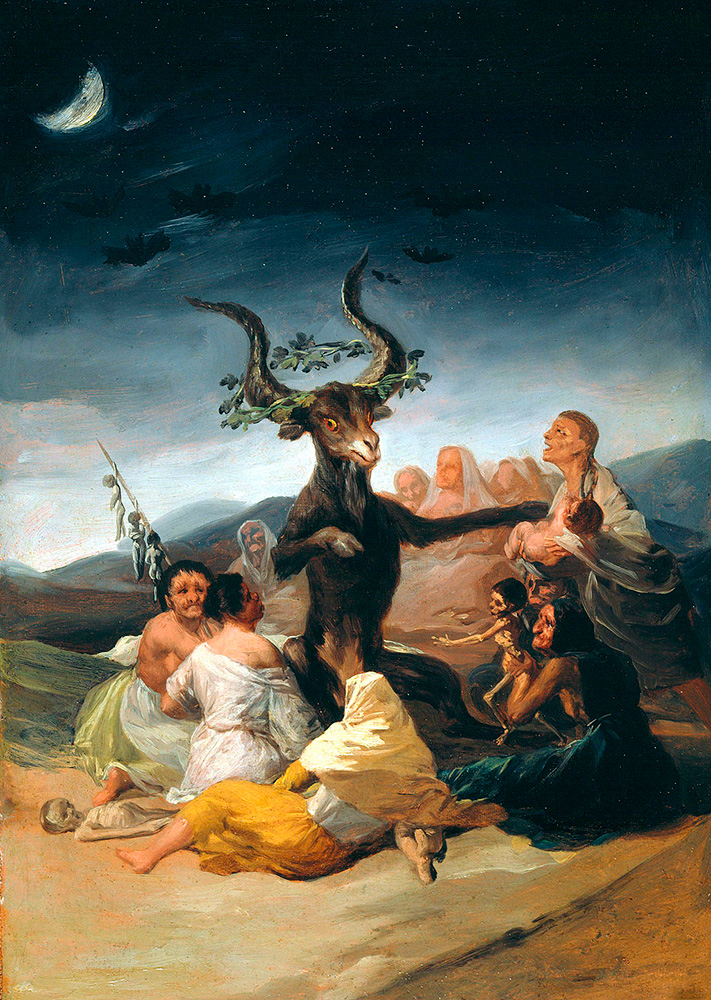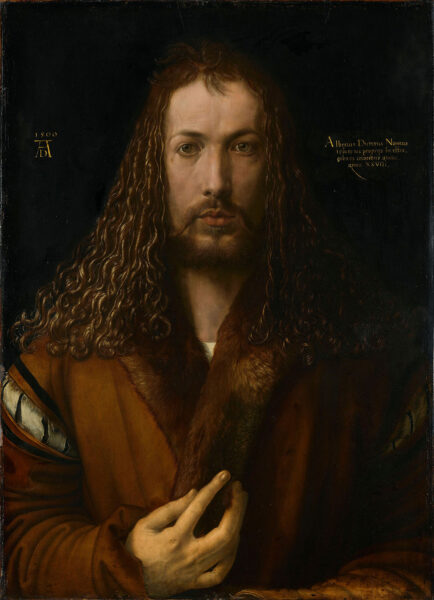Throughout the centuries, numerous artists have captured in their paintings many of the feelings that torment humanity—fearful of earthly threats or subjected to the despotic rule of the metaphysical. From the apocalyptic visions of Hieronymus Bosch to the harshness of Géricault, these pieces force us to confront what scares us, and sometimes, what we cannot understand.
In this list, we present ten of the most terrifying and mysterious works ever created. These are paintings that in their time caused perplexity and unease and still retain the power to evoke disquiet. The following masterpieces demonstrate how art can touch our deepest fears. All you have to do is surrender to the suggestion. If you want to see them in person, we will now point out their locations and links to admire them in all their terrifying glory.
1. "The Last Judgment" - Hieronymus Bosch
- Date: c. 1482-1516
- Museum: Akademie der Bildenden Künste, Vienna, Austria
- Link
- Famous for his ability to depict scenes of chaos and nightmare, in “The Last Judgment,” the eternal punishments in hell are so elaborate and horrifying that the details continue to shock modern viewers. The mix of humans and monsters in perpetual torture reflects the medieval fear of damnation. Bosch presents an inventory of tortures, instruments of evil and pain, machines of torment alongside a catalog of demons tormenting their victims for their unforgivable deadly sins.

2. "Saturn Devouring His Son" - Francisco de Goya
- Date: 1819-1823
- Museum: Museo del Prado, Madrid, Spain
- Link
- Part of Goya’s famous “Black Paintings,” this terrifying piece shows the god Saturn devouring one of his children. The violence and deranged gaze of Saturn reflect Goya’s desperation and his pessimistic view of humanity. The painter expresses the burden of illness and his acceptance of defeat in the face of old age. Some interpret that the Aragonese genius sought to depict the lead poisoning he suffered from, a common issue for alchemists, which eventually left him deaf.

3. "The Garden of Earthly Delights" (Hell Panel) - Hieronymus Bosch
- Date: c. 1490-1510
- Museum: Museo del Prado, Madrid, Spain
- Link
- This triptych is Bosch’s most enigmatic and complex work. It presents a twisted vision of paradise and hell, with the true visual hell depicted in the third panel, concluding a piece as beautiful as it is sinister, filled with dark symbolism. A woman clutching a bodiless head, humans trapped in transparent spheres, or a man riding a creature resembling a fish. Some experts conclude that the Dutchman aimed to reflect the anxieties of his time, including the fear of heresy and the dangers of lust.

4. "The Triumph of Death" - Pieter Bruegel the Elder
- Date: 1562
- Museum: Museo del Prado, Madrid, Spain
- Link
- Bruegel presents an apocalyptic vision dominated by death, reigning mercilessly. Corpses, skeletons, and destruction abound: the painting symbolizes the inevitability of mortal life and the chaos it can bring. The skeleton grasping the king holds an hourglass in the other hand, while a second hourglass appears on a wall with a skeleton moving its hands. This idea of “your time has come” is underscored by the presence of bells, alongside a dead tree, to announce the end of days.

5. "The Last Judgment" - Michelangelo Buonarroti
- Date: 1536-1541
- Museum: Sistine Chapel, Vatican City
- Link
- The fresco that covers the altar wall of the Sistine Chapel is famous for its epic scale and dramatic depiction of souls ascending to heaven or descending to hell. The condemned, especially, are painted in a distressing manner, trapped in expressions of pain and horror. The artist himself was not immune to being consumed by a lavish project that took five years of his life. Equally powerful are these other figures: 23 meters in height and 400 figures represented with all the technical precision characteristic of the master from Caprese.

6. "The Present and Hidden Demons" by Giotto di Bondone
- Date: c. 1305
- Museum: Scrovegni Chapel, Padua, Italy
- Link
- In the lower right corner of the Last Judgment fresco, Giotto presents physical demons torturing condemned souls. His detailed and tangible depiction of the monsters adds an unsettling physicality, offering a medieval vision of eternal punishment. But Giotto di Bondone did not limit himself to this orthodox composition of eternal, opposing realms. In 2011, a hidden demon was discovered among the clouds in one of the frescoes decorating the upper basilica of Assisi—800 years waiting to be found, a discovery that confirms that art is in every detail.

7. "Knight, Death, and the Devil" - Albrecht Dürer
- Date: 1513
- Museum: Städel Museum, Frankfurt, Germany
- Link
- In this famous work, a knight rides accompanied by Death and the Devil. As they advance together, the somber atmosphere and unsettling presences around them seem to suggest the imminence of fate, a reflection on human fragility. Yet he endures. He is a Christian knight facing the path that leads him down the roads of justice, resisting demonic temptations. It’s a whole allegory of doing right in God’s eyes.

8. "Isle of the Dead" - Arnold Böcklin
- Date: 1883
- Museum: Kunstmuseum Basel, Basel, Switzerland
- Link
- This enigmatic painting depicts a small boat approaching a dark, solitary island filled with cypress trees and tombs. The atmosphere is somber and eerie, making it an almost ghostly representation of death. The work, as poetic as it is unsettling, evokes feelings of isolation and foreboding. It’s hard to tell which is more terrifying—the spectral white figure standing in the prow of the boat or the infinite darkness among the cypresses. Arnold Böcklin had so much success that he made five versions.

9. "Witches' Sabbath" - Francisco de Goya
- Date: 1820-1823
- Museum: Museo del Prado, Madrid, Spain
- Link
- Another work from Goya’s “Black Paintings,” in “Witches’ Sabbath,” a group of witches worships a large goat, a symbol of the devil. The scene is shrouded in shadows, and the human figures seem monstrous in their devotion. It’s a vision of superstition and madness in an atmosphere laden with terror.

10. "Severed Heads" - Théodore Géricault
- Date: 1818
- Museum: Musée des Beaux-Arts de Lyon, Lyon, France
- Link
- Géricault developed an obsession with death and created a series of studies of decapitated heads. These paintings, with their raw realism and morbid obsession with details, offer a glimpse into the fragility and decay of human life. The level of detail in each brushstroke makes these works unsettling, as if the viewer is forced to confront death directly. It is said of Géricault, who was visited by death at only 32 years old, that his studio smelled of decay. Someday, we will dedicate a special feature to this precursor of gore.And that concludes our list. You can comment on our social media post to share who else you would have chosen to be in the top ten.










